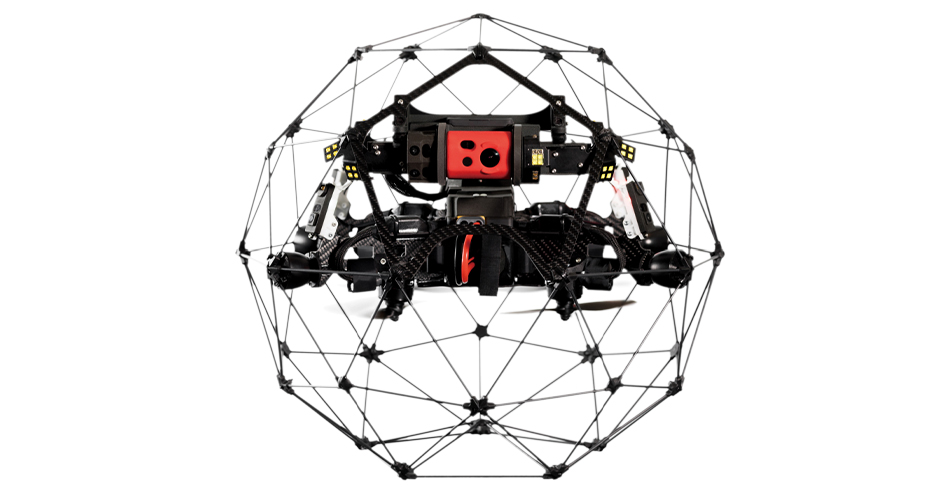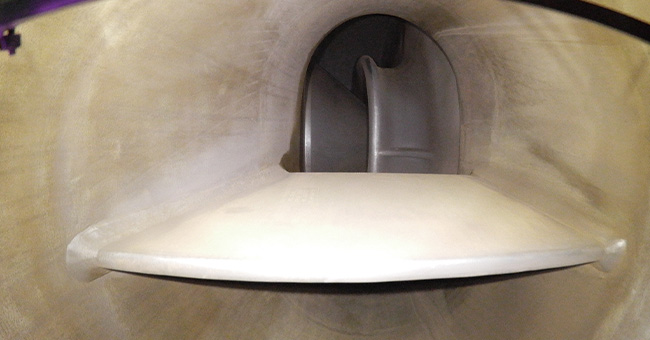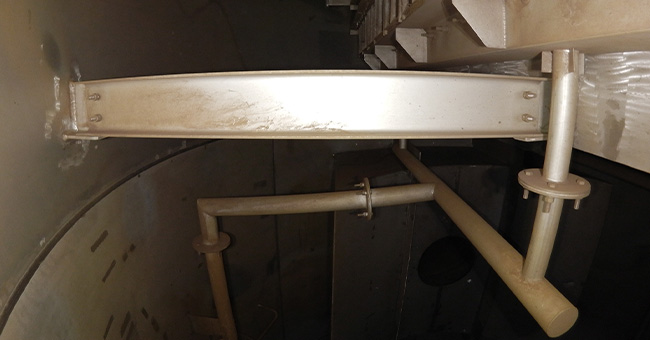Management of Health and Safety
Our Policy
The overarching goal of our management of health and safety is to ensure that all personnel at our worksites return home each day, free from injury and illness. We recognize that our employees’ physical and mental well-being is the foundation of our company, and accordingly, we strive to provide them with a safe work environment and carry out initiatives aimed at keeping them in good health. We regard the safety of employees and contractors involved in our operations as our most important concern, and manage occupational health and safety risks through our HSEMS.
In the course of our operations, we must never allow the occurrence of major accidents such as fatalities, major leaks and life-threatening injuries. For this reason, we make the complete prevention of serious incidents one of our management goals and have subsequently set common safety goals for all our employees.
As a way of quantitatively measuring our safety performance, we monitor two KPIs of injury-causing accidents: the lost time injury rate (LTIR)6 and the total recordable injury rate (TRIR)7. Our LTIR and TRIR for FY2021 were 0.38 and 2.90 respectively, both of which had increased from the preceding year. This can be attributed to a slight increase in the frequency of minor injuries that occurred from large-scale repair work and other non-routine tasks at overseas operator projects, and from insufficient management of pandemic-related fatigue.
Our ongoing initiatives for incident prevention include promptly distributing incident bulletins across our organization, increasing publication of ‘Learning from Incidents’ materials, as well as analyzing trends in serious/injurious incident and continuously sharing the insights gained. We also monitor two leading safety KPIs related to incident management—implementation of incident investigations and implementation of high-priority corrective actions—and are strengthening our ability to promptly conduct incident investigations and take remedial action. Further activities to prevent serious accidents include firmly embedding Life-Saving Rules to ensure the safe performance of tasks with a high risk for fatal incident.
6 LTIR: Rate of injuries resulting in fatalities or lost time per million hours worked
7TRIR: Rate of injuries resulting in fatalities or lost time, not entailing lost work time, or requiring medical treatment per million hours worked
Accident Prevention Initiatives
Life-Saving Rules
Life-Saving Rules are rules intended to protect the lives of those engaged in high-risk work activities that may cause fatality. They prescribe behaviors that should be practiced to prevent such incidents. The Life-Saving Rules we follow have been set out in a simple, accessible format, focusing on nine highly hazardous tasks.
All INPEX employees and contractors engaged in our business operations are required to comply with the Life-Saving Rules. Anyone who witnesses noncompliant behavior is obligated to intervene.
By encouraging everyone at work sites to abide by these rules, we seek to foster a safety culture that promotes active engagement and intervention against unsafe practices and conditions, and thus prevent occupational incident across our entire organization.
Life-Saving Rules
Bypassing Safety Controls
Confined Space
Driving
Energy Isolation
Hot Work
Line of Fire
Safe Mechanical Lifting
Work Authorisation
Working at Height
Using Drones to Inspect Equipment at Ichthys LNG
Ichthys LNG’s onshore terminal in Darwin underwent its first major periodic inspection in FY2021. To comply with the Life-Saving Rule “Confined Spaces”, drones were used to inspect the interior of the equipment, thus eliminating the HSE risks of having human inspectors enter confined spaces.

As part of the inspection, the interiors of gas pipes were carefully examined for contamination or damage, and the position and condition of thermocouples inside heat exchangers were checked.
Enclosed spaces such as inside drums and pipes carry risks including low oxygen concentration, residual flammable substances, and the incursion of solid or liquid substances. The use of drones kept the inspectors safe from exposure to such hazards. Drones are relatively simple to operate and eliminate the time-consuming task of setting up and taking down the scaffolding required for direct visual examination.
Drones are being used at Ichthys LNG to perform various other inspections, including pre-assembly damage assessments for scaffolding, checking for gas leaks from elevated tanks, and examining offshore flare stacks. Trials are underway to expand drone inspection to other structures, including the offshore floating production, storage and offloading (FPSO) facility’s hull and turret.


HSE Forum (Safety and Health Session)
Since FY2016, we have held an annual INPEX HSE Forum to enable employees to share HSE best practices, insights and experiences, with the goal of enhancing our HSE performance across the entire group, including at operator projects in Japan and overseas.
The forum’s Health and Safety Session has served as an opportunity for participants to discuss a broad range of topics, such as how to foster HSE leadership and culture, incident analysis, lessons learned from construction projects, contractors’ HSE management, improvement of communication, KPI setting, and HSE management for dealing with COVID-19.
The FY2021 conference was attended by 61 HSE managers and other representatives from around the world. The discussions focused on three topics: Health Management, Incident Management and HSEMS.
Operator project representatives reported on the HSE activities of their organizations, challenges that need to be resolved, and plans for the future. The session also included an all-hands workshop in which participants identified issues requiring a group-wide response, prioritized those issues, discussed strategies for tackling them, and proposed specific action plans. The products of the forum were discussed at the Annual HSE Meeting in November 2021 and are being applied to further improve HSE performance across INPEX.
Strengthening Employee Health Management and Infection Control
In response to the COVID-19 pandemic that has persisted since 2020, we stepped up our efforts in FY2021 to protect the physical and mental health of each employee and control the spread of infection. These efforts have included continuing with basic preventive actions such as having employees check their body temperature before going to work, regularly disinfecting shared facilities and desks, and ventilating rooms. We have instituted hot desking at our headquarters to deal with health risks associated with the ‘new normal’, and support flexible workstyles to physically reduce the risk of infection. We worked to safeguard the mental health of teleworking employees by regularly monitoring their stress levels and offering professional counseling. Moreover, efforts have been made to explore ideas for strengthening mental health support for everyone in our group, including senior management, and to disseminate best practices.
We also established three coronavirus vaccination centers at work sites in Japan to enable our personnel, their families, and employees of partner companies to have quick and reliable access to the vaccine.
The Corporate Health Management Standard—which comprehensively covers fundamental health management activities across our organization— was revised to more reliably reduce health risks and promote better employee health outcomes. Informed by best practices from overseas, the revision sets out the minimum requirements that we must fulfill as a company committed to protecting the physical and mental well-being of its employees, including the identification and resolution of health risks at each workplace, managing fatigue and mental health, and implementing infection control measures.
In FY2022, we will take steps to further enhance health management and infection control. This will include firmly embedding Corporate-led health management to improve health management at each worksite, and formulating infectious disease guidelines based on our experiences in dealing with COVID-19.
